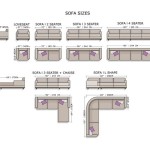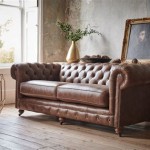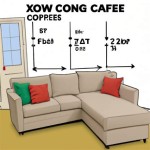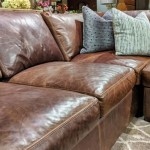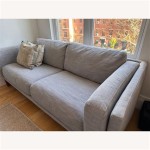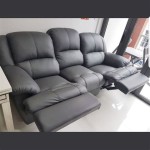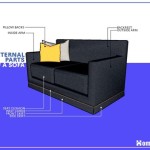What Type of Sofa is Most Comfortable in Taiwan?
Selecting the most comfortable sofa for a home in Taiwan requires consideration of specific environmental factors and lifestyle preferences prevalent in the region. Taiwan's subtropical climate, characterized by high humidity and warm temperatures for a significant portion of the year, necessitates careful material selection and design choices to maximize comfort and longevity. Furthermore, the typically smaller living spaces in Taiwanese apartments often dictate a preference for space-saving and multi-functional sofa designs. Determining the optimal comfort level also involves assessing the individual needs and preferences of the residents, considering factors such as body type, preferred seating posture, and frequency of use.
Beyond purely physical comfort, cultural preferences also play a role in sofa selection. For example, aesthetics and feng shui principles can influence the choice of color, shape, and placement. The growing popularity of minimalist and contemporary interior design trends in Taiwan further impacts the selection process, often leading to a preference for clean lines, neutral colors, and adaptable designs. Therefore, identifying the "most comfortable" sofa is a multifaceted process that considers climate, space constraints, personal preferences, and cultural influences.
Climate Considerations: Breathable Fabrics and Moisture Resistance
Taiwan's humid climate is a primary factor influencing sofa comfort. Fabrics that retain moisture can become uncomfortable and even harbor mold and mildew, leading to health issues and unpleasant odors. Therefore, selecting breathable and moisture-resistant materials is crucial. Natural fibers like linen and cotton blends are popular choices due to their inherent breathability. These fabrics allow air to circulate, preventing the build-up of moisture and heat, keeping the sofa cool and comfortable even during the hottest months.
However, natural fibers are also prone to staining and can be more susceptible to damage from humidity. For enhanced durability and moisture resistance, synthetic microfibers are also a viable option. Microfibers are tightly woven fabrics that are highly resistant to water and stains, making them easier to clean and maintain. While not as breathable as natural fibers, high-quality microfibers can offer a good balance of comfort and durability. The key is to look for microfibers specifically designed for furniture upholstery, ensuring they are both soft to the touch and capable of withstanding the rigors of daily use.
Furthermore, the internal structure of the sofa should also promote airflow. Avoiding tightly packed padding and opting for cushions filled with materials like shredded foam or down alternatives can improve ventilation and prevent moisture build-up. Sofa frames made from treated wood or metal are also preferred, as they are less susceptible to warping or rotting due to humidity.
Space Optimization: Modular Designs and Multi-Functional Sofas
Space constraints are a common reality in Taiwanese apartments, making space optimization a key consideration when choosing a sofa. Modular sofas are increasingly popular due to their versatility and adaptability. These sofas consist of individual sections that can be arranged in various configurations to suit different room layouts and usage needs. This allows residents to customize their seating arrangement and maximize the available space.
Multi-functional sofas, such as sofa beds and storage sofas, are also highly sought after. Sofa beds provide an extra sleeping space for guests, which is particularly useful in smaller apartments where dedicated guest rooms are not available. Storage sofas, equipped with hidden compartments under the seats or in the armrests, offer valuable storage space for blankets, pillows, or other household items, helping to declutter the living area and create a more organized and comfortable environment.
The size and shape of the sofa should also be carefully considered in relation to the overall dimensions of the room. Avoiding oversized sofas that overwhelm the space is essential. Instead, opting for compact designs with clean lines and minimalist aesthetics can create a sense of spaciousness and enhance the overall comfort of the living area. Furthermore, sofas with low profiles and exposed legs can visually lighten the space, making it feel larger and more airy.
Ergonomics and Support: Prioritizing Posture and Body Alignment
Beyond climate and space considerations, ergonomic design plays a crucial role in sofa comfort. A comfortable sofa should provide adequate support for the back, neck, and legs, promoting proper posture and reducing the risk of discomfort or pain. The seat depth and height should be appropriate for the user's body size, allowing them to sit comfortably with their feet flat on the floor and their knees at a 90-degree angle.
The firmness of the cushions is also a significant factor in determining comfort. While personal preference plays a role, a sofa that is too soft can lack adequate support, leading to slouching and back pain. Conversely, a sofa that is too firm can feel uncomfortable and unyielding. The ideal firmness level is one that provides a balance of support and cushioning, conforming to the body's contours without sinking too deeply.
The type of cushion filling also impacts the overall comfort and support provided by the sofa. High-density foam provides excellent support and durability, while down-filled cushions offer a softer, more luxurious feel. A combination of foam and feathers or down alternatives can provide a balance of support and comfort. The backrest should also provide adequate lumbar support, promoting proper spinal alignment and reducing strain on the lower back. Adjustable headrests or lumbar pillows can further enhance ergonomic support and cater to individual needs and preferences.
In conclusion, while a single "most comfortable" sofa for everyone in Taiwan doesn't exist, the sofas that are well-suited take into account the environmental factors, space limitations, and ergonomic requirements specific to the region. Prioritizing breathable fabrics, space-saving designs, and supportive cushions are crucial for maximizing comfort and creating a relaxing and functional living space.

18 Best Sofas 2024 Barker Stonehouse To John Lewis British Gq

18 Best Sofas 2024 Barker Stonehouse To John Lewis British Gq

18 Best Sofas 2024 Barker Stonehouse To John Lewis British Gq

19 Best Sofa Beds 2024 Tried And Tested By Gq S Editors British

19 Best Sofa Beds 2024 Tried And Tested By Gq S Editors British

Duet Minimalist And Very Comfortable Sofa Timeless Design
-Soho-sofa-bed%2C-Dusk-.png.jpg?strip=all)
19 Best Sofa Beds 2024 Tried And Tested By Gq S Editors British

U Can Found Small Apartment Fabric Double Storage Sofa Comfortable And Soft Texture 137cm Removable Washable Dark Gray 900032 Color Grey Size 140

Alfred 2 Seater Teal Home World

Zeus Design Sofa Bed Fama Sofas

